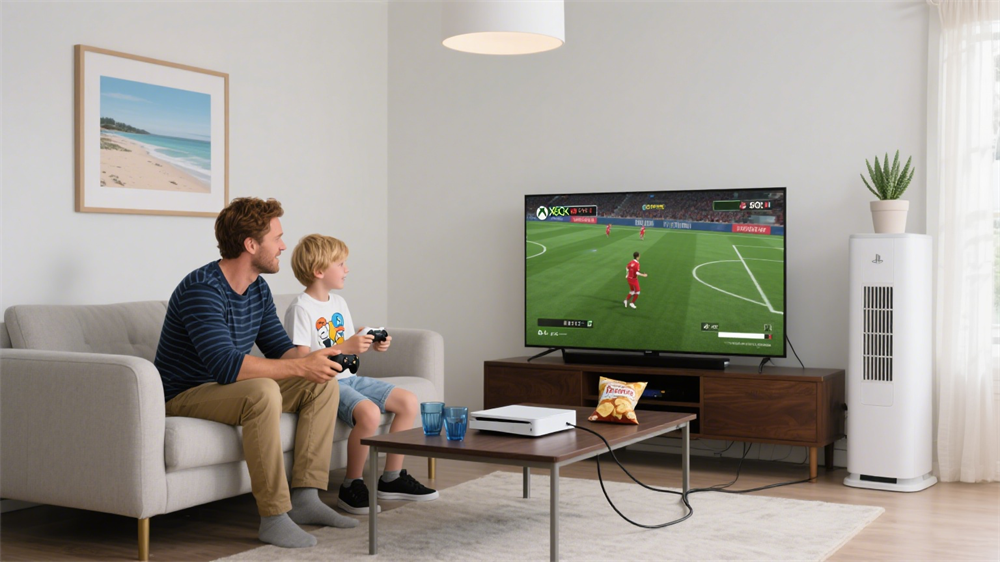With continuous advancements in audiovisual technology, demand for high-definition transmission is growing rapidly. HDMI fiber optic cables, as a next-generation medium, are gaining market traction due to their superior long-distance performance. This guide delves into their structure, applications, and common troubleshooting tips for optimal deployment.

I. Deconstructing HDMI Fiber Optic Cable Architecture
Interface & Signal Engineering
Standard Type-A Connectors (19-pin):
TMDS Channels: 3x differential pairs for uncompressed video/audio (up to 48 Gbps in HDMI 2.1).
DDC/CEC: Bi-directional control for EDID handshake and device automation.
HEAC (ARC/eARC): Dedicated audio return channel for simplified audio setups.
Electro-Optical Conversion:
Integrated laser diodes (Tx) and photodiodes (Rx) at cable ends convert electrical signals to optical pulses (and vice versa).
Eliminates EMI/RFI susceptibility inherent in copper cables.
Material Science Advantages
Core Components:
Optical Fiber: Multi-mode OM3/OM4 glass fiber (or POF for cost-sensitive applications).
Strength Members: Aramid yarn reinforcement for tensile durability.
Shielding: Multi-layer EMI/RFI protection despite inherent immunity.
Performance Benchmarks:
Bandwidth: 48 Gbps (HDMI 2.1), supporting 8K@120Hz/4K@144Hz.
Attenuation: <0.5 dB/km vs. ~20 dB/10m for copper at 18 Gbps.
Latency: <0.1 ms over 100m (vs. 2ms+ for active copper cables).
II. Advanced Application Scenarios
Next-Gen Home Entertainment
8K/120Hz Gaming: Critical for PS5/Xbox Series X setups with VRR/ALLM.
Atmos/DTS:X Immersion: Lossless audio transmission over 20m+ to soundbars/receivers.
Modular Installations: In-wall conduits (CM-rated jackets) for clean builds.
Broadcast & Production Workflows
OB Vans: Fiber’s lightweight nature simplifies cabling in mobile units.
HDR Color Grading: 12-bit 4:4:4 color fidelity over 50m+ between reference monitors.
IP-Based Hybrid Systems: SDI-over-Fiber conversion via HDMI 2.1’s 48Gbps headroom.
Enterprise & Digital Signage
Campus-Wide AVoIP: Extend 4K signals across buildings via existing fiber backbones.
Interactive Kiosks: Reliable 100m+ runs in EMI-heavy industrial environments.
Mission-Critical Surveillance
AI Analytics Feeds: Transmit high-bitrate 8MP/4K streams to NVRs without compression artifacts.
PTZ Camera Control: Embed RS-232/IR over CEC for centralized management.
III. Expert Answers to Common Questions
Q1: What formats do HDMI fiber optic cables support?
A: Full support for 4K@60Hz, 8K@60Hz, HDR10+, Dolby Vision, Dolby Atmos, DTS: X, and LPCM audio.
Q2: Maximum reliable transmission distance?
A: Typically 50–300+ meters, depending on cable quality and device compatibility. Always verify specs for your setup.
Q3: How to ensure compatibility with my devices?
A:
Match HDMI port types (Type-A is standard).
Confirm devices support HDMI 2.0 or later.
Check for "Ultra High Speed" certification on cables.
Q4: No video/audio after connection? Troubleshoot with:
A:
Re-seat connectors firmly at both ends.
Verify source device outputs HDMI signal (disable other ports).
Ensure display input is set to the correct HDMI port.
Test with a certified backup cable.
Q5: How to fix audio-video sync issues?
A: Most devices auto-sync. If lag persists, manually adjust audio delay settings on the source/display.
Q6: Maximizing audio quality?
A: Use high-quality, certified cables; avoid lengths exceeding manufacturer recommendations. Ensure bitstream/direct audio modes are enabled.
IV. Emerging Applications & Future Trends
VR/AR Systems: Low-latency 8K@120Hz for untethered headsets.
Medical Imaging: 10-bit 4K/60Hz surgical monitors with zero EMI interference.
Automotive AV: Next-gen infotainment systems with fiber backbones (reducing CAN bus load).
V. Pro Installation Checklist
Pre-Install Testing: Verify signal integrity at full spec (e.g., 8K/60Hz 4:4:4) before permanent routing.
Grounding: Bond shield drains to chassis ground at endpoints (prevents ESD damage).
Fusion Splicing: For custom lengths, use OTDR testing to ensure <0.2dB splice loss.
Documentation: Label both ends with length/specs for future maintenance.
Tag:HDMI,Fiber Optic Cable




